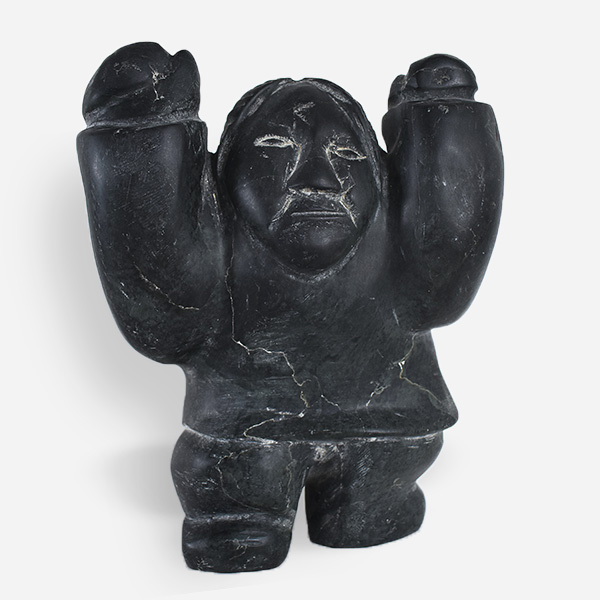
The Inuit, formerly referred to as the “Eskimos”, have survived for thousands of years in some of the harshest, inhospitable and coldest climates in the world – the Canadian Arctic. Their struggle, survival and appreciation for nature is a common recurring theme in their art.
The Canadian Arctic – colloquially known as the “barrens” – is mostly uninhabited and devoid of trees and arable land; Only lichen and small berries grow in the short summer season. To survive, the Inuit rely on the abundant animals and marine life available across the Arctic environment. Whales, seals, walruses, fish, caribou, musk ox, and birds provide the essential nutrients of life while the bones and skins cloth and supply the necessary utensils, tools and instruments. Some of the ways the animals are used include:
- Seals skins help make waterproof boots and coats
- Whale bones help make komatiks (sleighs), knives and spears. The larger bones are even used to make summer huts.
- Whale and Seal blubber is used to provide heat and light in the summer tents and winter ice and snow igloos.
- Caribou hides are used to make various types of clothing such as blankets and tent material for summer homes. During these times soapstone was mostly used for the making of “kudliks” bowls to help burn the seal and whale oil.
The Inuit are a very spiritual people and have “Shamans’” to help guide their lives and hunts. For example, Shamans often use animal bones to carve small amulets for use in spiritual ceremonies. Many of these Amulets have been found in old archeological sites and date back thousands of years. These amulets were the first appearance of carvings amongst the Inuit people.
As time evolved and European explorers travelled to the arctic, steel and other industrial products started to replace animal bone products. In spite of the European presence, the Inuit continued their nomadic subsistence lifestyle until the 1950’s when the Canadian Government built small hamlets in response to the Caribou Famine that had plagued the high arctic. This reduced a traditionally “hunting and gathering” society to a sedentary employment dependent society. Many continued hunting, however, the practice was not essential to life – since the government created opportunities for employment and children were expected to attend school. Their survival was no longer dependent on learning to master the environment, but instead through government work programs.
It was during this time, that the Canadian government sent John Houston to the arctic to explore the viability of introducing carving and print making to the Inuit communities. Initially, Houston, provided interested Inuit with soapstone and asked them to carve whatever they wanted. To his delight, their response was very successful – the works of art were revered by the Canadian and world art markets. During this time the Inuit expanded the materials used to include traditional survival materials. They used seal skins to make graphic prints, bones from whales, walrus and narwhal tusks to make hunting utensils for soapstone carvings. They even carved musk ox horn, caribou antler, polar bear and walrus teeth to make decorations for eyes and other ornaments .
In short, the Inuit used the essential items that they had been dependent on for centuries to create a new form for survival – ART.

